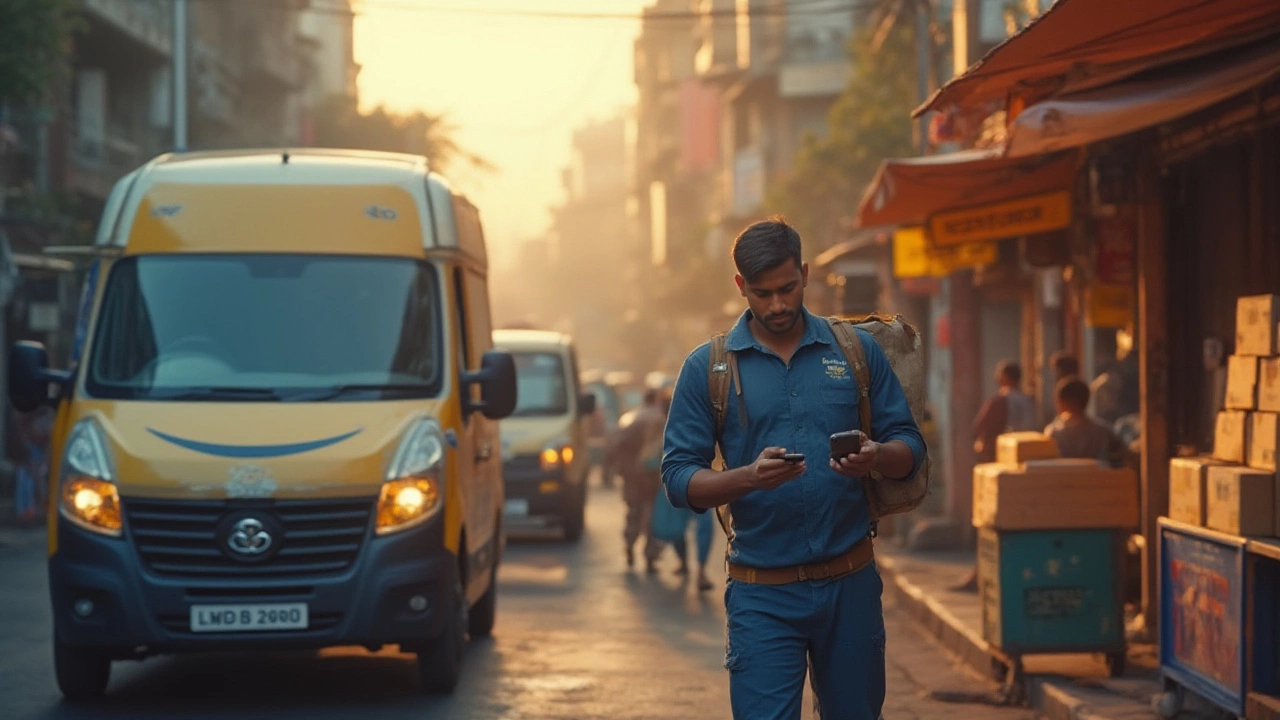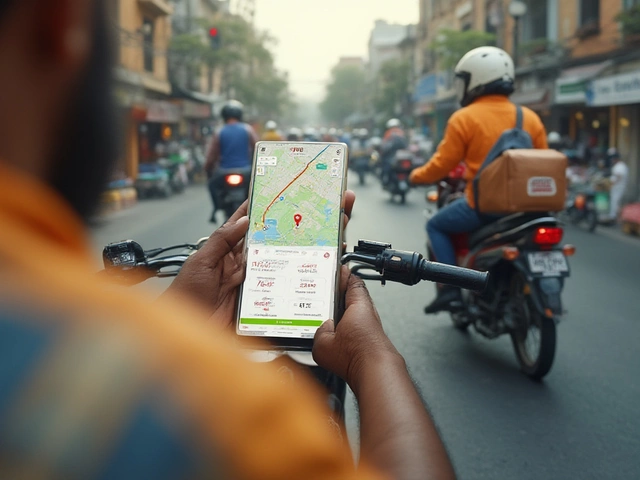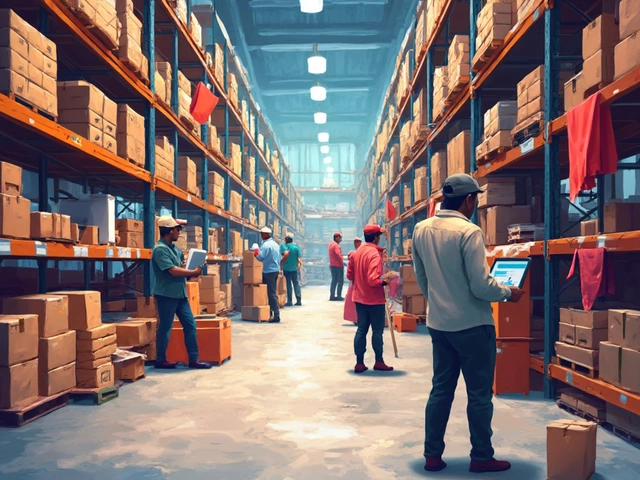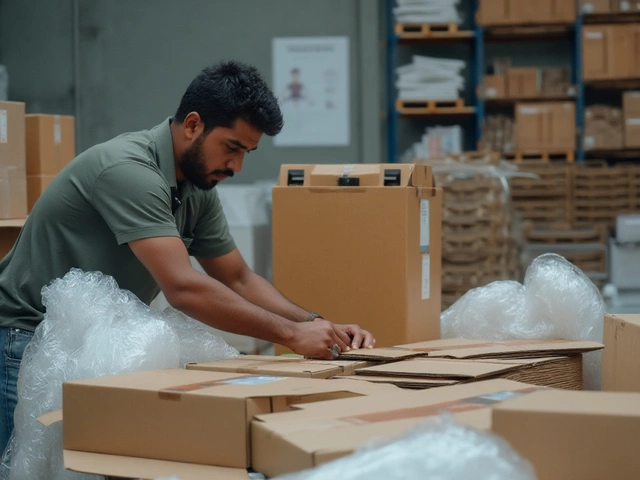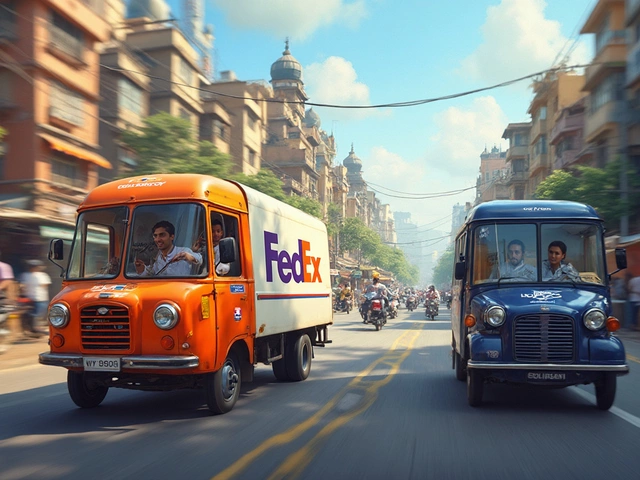Last time I watched my kid Emery chase the Amazon van down the street so she could grab the package before it hit the porch, two things hit me at once: how much we depend on these blue-vested heroes, and how wild their days must be. I mean, we see dozens of deliveries pile up across the neighborhood—sun up to sun down, seven days a week. There are rumors about drivers raking in serious cash, but the truth is muddier. What’s the real ceiling for Amazon delivery drivers? And is all that hustle worth it?
Breaking Down Amazon Delivery Pay: From Base Rate to Big Bonuses
Start with the basics. There are two main types of Amazon delivery drivers: those working for Amazon DSPs (Delivery Service Partners) with those familiar blue vans and uniforms, and the folks hustling with Amazon Flex—the gig-style version where drivers use their own cars, working when and where they want.
Let’s dig into the DSP side. As of mid-2025, most DSP drivers can expect a base rate between $18 and $22 per hour, depending on location, shift, and company performance. In pricier metro areas like San Francisco or New York, it’s not unheard of to see base rates closer to $25. Drivers typically work eight- to 10-hour shifts, and a full-time week lands you a paycheck between $750 and $1,000 before taxes.
But it doesn’t stop at the hourly figure. A lot of DSPs push extra earnings through performance bonuses, seasonal pay bumps (think Prime Day and holidays), and even retention incentives if you stick around for a few months. Summer 2025 saw some companies rolling out $1,000 hiring bonuses or $200 monthly performance boosts—if you hustle and meet delivery and safety goals, of course.
Amazon Flex is a whole other beast. These drivers get paid per delivery block, not hourly, so there’s some variability. As of now, most Flex blocks pay between $19 to $29 an hour. The high end comes in cities with terrible traffic, high demand, or bonus offers for urgent blocks. But the real catch? You pay for your own gas, maintenance, and car insurance. When you tally up costs, your take-home might drop to $14-$20 per hour unless you drive a real fuel-sipper and know the efficient routes like the back of your hand.
Some folks play the system; I know a guy who stacked urgent evening blocks and cleared over $1,400 in a single busy week before Christmas. But that’s rare and honestly not sustainable year-round.
Here’s a look at actual 2025 Amazon driver compensation data:
| Driver Type | Average Hourly Pay | Weekly Hours | Estimated Annual Max |
|---|---|---|---|
| Amazon DSP | $18–$25 | 40–50 | $55,000–$60,000 |
| Amazon Flex | $19–$29 (pre-expenses) | 20–35 (varies) | $45,000–$50,000 |
| Peak/Bonuses | +$2–$5/hr bonus | Varies | $65,000+ (best case) |
And what about tips? For Flex drivers, customers can tip through the app—some do, many don’t. It’s not life-changing, but a friendly route in the right area might bring in an extra $20–$60 a day during heavy events. You don’t see this as a DSP. Tips are for Flex drivers only and not even guaranteed then.
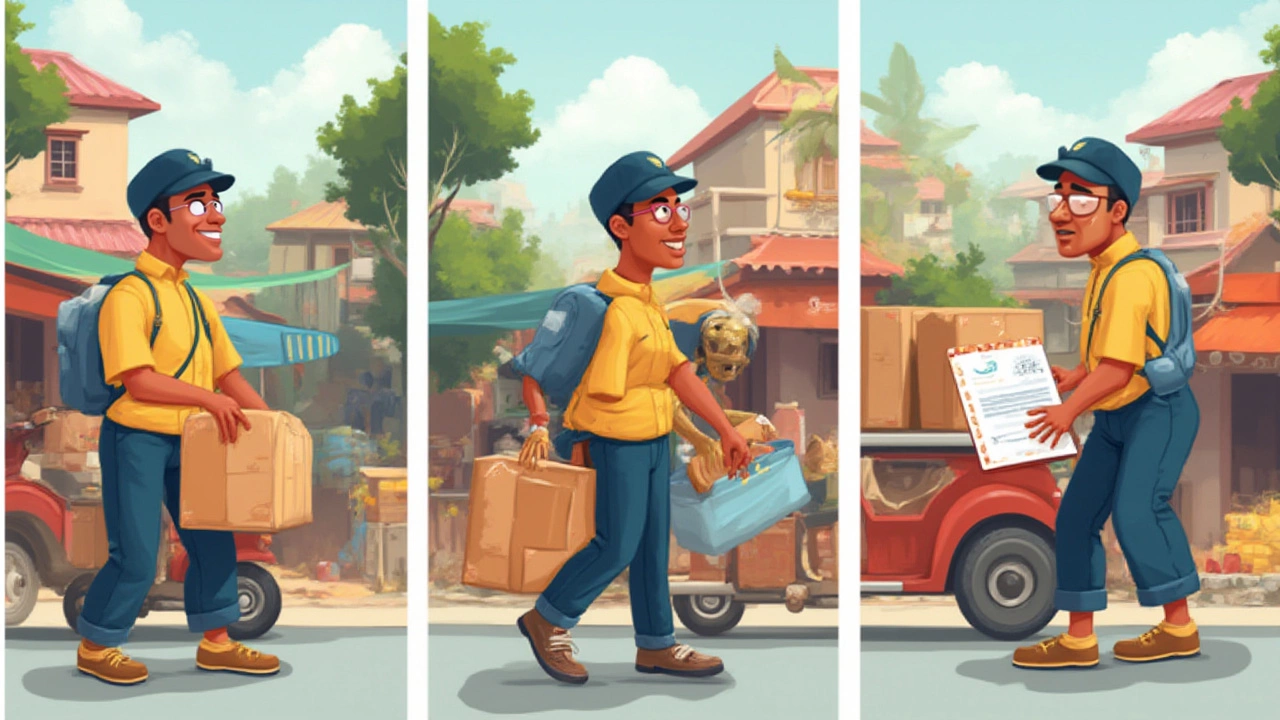
The Ceiling: Is Six Figures Possible for an Amazon Driver?
You’ll see Reddit and TikTok posts claiming drivers “make 100k+ running all year.” Here’s the raw deal: for most, that’s simply not how it shakes out. Even hustling OT every week, a DSP driver capping out at $25/hour and doing 50-hour weeks plus hitting incentives might rake in $65,000–$70,000 a year. Yes, a handful might hit $75,000 if the stars align—add up every peak bonus, every incentive, and log those wild Christmas weeks where every Amazon buyer loses their mind and orders last-minute—but that’s stacking long days, stress, and rarely seeing your family.
Amazon Flex? To even approach $70,000 a year, you’d need to land high-paying blocks all day, every day, drive safely, AND hope nothing goes wrong with your car. Most drivers float somewhere between $35,000 and $50,000 when all the real expenses are counted. That’s higher than rideshare work, but a far cry from Wall Street. Six figures? There might be one or two unicorns out there, but they’re working every waking minute and skipping almost everything else. I’d bet my life savings they’re burnt out by spring.
BUT—there are smart ways to boost your take-home. Flex drivers who stack surge and event blocks (like Prime Day, Cyber Monday, and local sports events) might clear $400+ in a crazy single day if they know the routes, avoid traffic, and get tipped. Long-term, though, sustaining those numbers is nearly impossible without burnout or risking safety shortcuts. Quality of life counts. If my own spouse, Cecilia, worked those hours, I’d never see her at dinner—or on weekends, for that matter.
- If you want the peak checks, look for routes in high-volume, high-density city areas—small blocks, lots of tips, few miles driven.
- Work with the best-rated DSPs—they often pay bonuses for attendance and safety, and keep the vans running smoothly so you’re not breaking down midday.
- Schedule major holidays and Prime Week for max incentives, but don’t forget: hours will be killer and routes stacked.
- Drive smart—every speeding ticket or dropped package can dock your pay or even get you booted from choice assignments.
While you can absolutely pay rent, clear bills, and sock away savings, wild six-figure stories? That’s marketing hype or outliers, not typical experience. If extra cash is the goal, delivering during surge events or working OT can pad paychecks, but don’t count on that as “normal.”
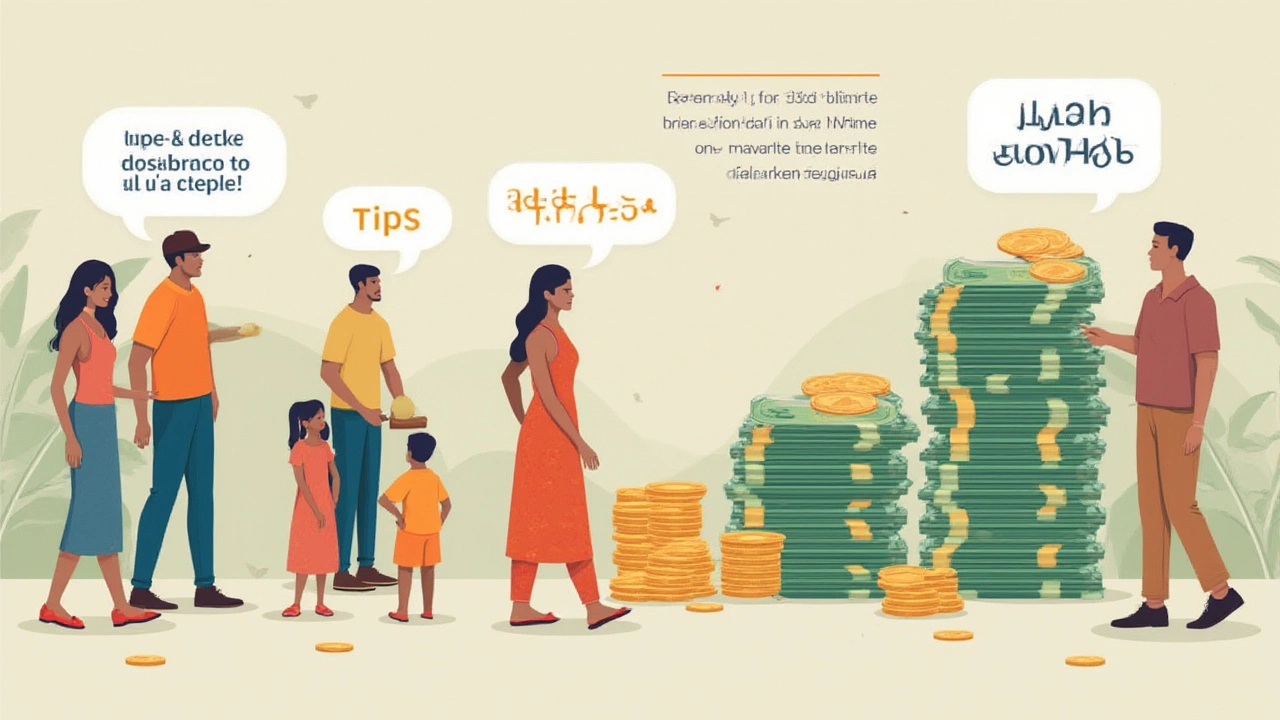
Is It Worth It? Real Talk About the Amazon Delivery Life
The grind is real. Amazon’s algorithm sets daily routes, so whether you’re a DSP pro zipping around town or a Flex driver crisscrossing the suburbs, there’s not much control over which neighborhoods you work. Most routes are optimized for speed and minimal downtime, but weather, traffic, porch pirates, and dogs with a death wish don’t care about algorithms.
Expect to walk miles per shift, carry heavy packages, and brave neighborhoods where GPS signals vanish. DSP drivers get uniforms, van maintenance, and the shield of a logistics company dealing with paperwork. But you’re still racing the clock. Miss too many packages, route metrics slide, or packages get lost? That bonus goes up in smoke.
With Flex, you’re your own boss but also chief mechanic and risk-taker. You cover gas, insurance, tire wear, city parking tickets, and back aches. Best case, you work two or three well-paid 3-hour blocks a day and earn the top end—while hunting for more slots in a crowded app full of gig workers.
I’ve chatted with plenty of drivers on my street about what matters most. Nearly all say the predictability of DSP work is great if you want steady income and benefits (some offer health and dental). Flex is king for those who need side cash—think parents, students, or anyone juggling other jobs. Both can burn you out if you don’t put boundaries in place. Package volume spikes during events; after that, work might slow. Veteran drivers recommend good shoes, energy bars in your car, and memorizing every shortcut available.
Here are some battle-tested insider tips:
- Keep a cooler with water and snacks. Dehydration and hunger are paycheck killers.
- Pay attention to driver forums or Discord servers. That’s where surge tips, payment glitches, and the best routes get shared first.
- Calculate your actual hourly pay, not just what Amazon advertises—drop mileage, gas, and wear-and-tear into your math if you drive Flex.
- Look for union-backed or higher-rated DSPs if you want long-term security.
And yes, there’s an undeniable satisfaction. When my daughter Emery met our regular driver, she handed him a thank-you note—and the smile on his face was priceless. Most drivers say gratitude from customers actually matters, especially after a hundred-odd stops on their fourth day straight. Little moments like that make the grind worthwhile.
So, what’s the Amazon delivery driver pay range in 2025? You can bag $18–$25 per hour as a base, push into the $55,000–$70,000 bracket if you’re relentless, and maybe see extra hundreds in tips during the wildest weeks. Flex drivers have more freedom but eat their car’s depreciation for breakfast. Is it big money? Sometimes, yes—it’s honest, hard-earned work. But don’t expect lottery wins. The ceiling is there, and a 100k payday is a unicorn chasing its own tail. If you hit the right routes with the right mindset, and keep your body—and your sanity—intact, Amazon delivery pays the bills and then some. Just know what you’re really getting into before you slam that van door for your first shift.
